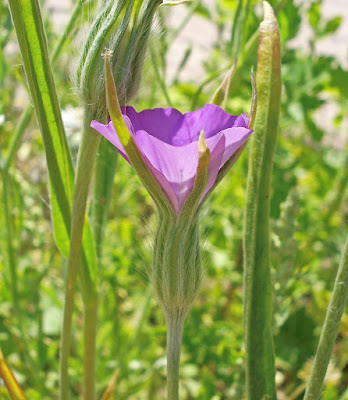 Corn cockle has grown as a weed among grain crops for millennia. It grew around Europe’s first Stone Age inhabited areas, and signs of it have been found in Pompei, which was covered in volcanic ash in ancient times. Corn cockle used to be a very familiar weed in rye fields in the south-western archipelago, and elsewhere in Finland it has sometimes appeared as an abundant alien, especially in fields that have been sown with Russian oats. Corn cockle also became more common in the years following crop failures, because seed then had to be imported.
Corn cockle has grown as a weed among grain crops for millennia. It grew around Europe’s first Stone Age inhabited areas, and signs of it have been found in Pompei, which was covered in volcanic ash in ancient times. Corn cockle used to be a very familiar weed in rye fields in the south-western archipelago, and elsewhere in Finland it has sometimes appeared as an abundant alien, especially in fields that have been sown with Russian oats. Corn cockle also became more common in the years following crop failures, because seed then had to be imported.The whole plant, especially the seeds, contains poisonous compounds, and they can spoil flour if they are not removed: the food tastes bad, and a larger amount can cause nausea and worse – it has been claimed that even five seeds is enough to cause death by paralyzing the respiratory system. Like many annuals corn cockle produces a lot of seed, up to 2,500 from a single plant.
It likes cultivated soil, and it has overwintered at least partly mixed in with crop seed in grain silos. Over the last century it has been hit hard by changes in farming methods, especially the development of more efficient seed-cleaning, and it almost died out in Finland in the 1960s.
Nowadays corn cockle grows as a casual alien everywhere in Finland except northern Lapland along railways, in harbours, and on dry banks and waste ground. Finding it requires a slice of good luck however, and many eager botanists have never set eyes on it in the wild.
It grows with a stem to 100 cm long with lanceolate leaves. The flowers are up to 5 cm in diameter, usually single at the ends of the stem. The sepals have 5 narrow teeth much longer than the petals. It has 10 stamens. It has slender pink flowers. It is a stiffly erect plant up to 1 metre (3 ft 3 in) tall and covered with fine hairs. Its few branches are each tipped with a single deep pink to purple flower. The flowers are scentless, are 25–50 millimetres (1–2 in) across and are produced in the summer months – May to September in the northern hemisphere, November to March in the southern hemisphere.
Each petal bears two or three discontinuous black lines. The five narrow pointed sepals exceed the petals and are joined at the base to form a rigid tube with 10 ribs. Leaves are pale green, opposite, narrowly lanceolate, held nearly erect against stem and are 45–145 mm (1.8–5.7 in) long. Seeds are produced in a many-seeded capsule. It can be found in fields, roadsides, railway lines, waste places, and other disturbed areas.


No comments:
Post a Comment